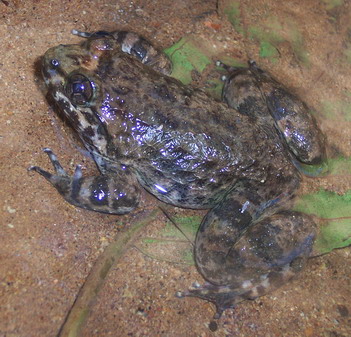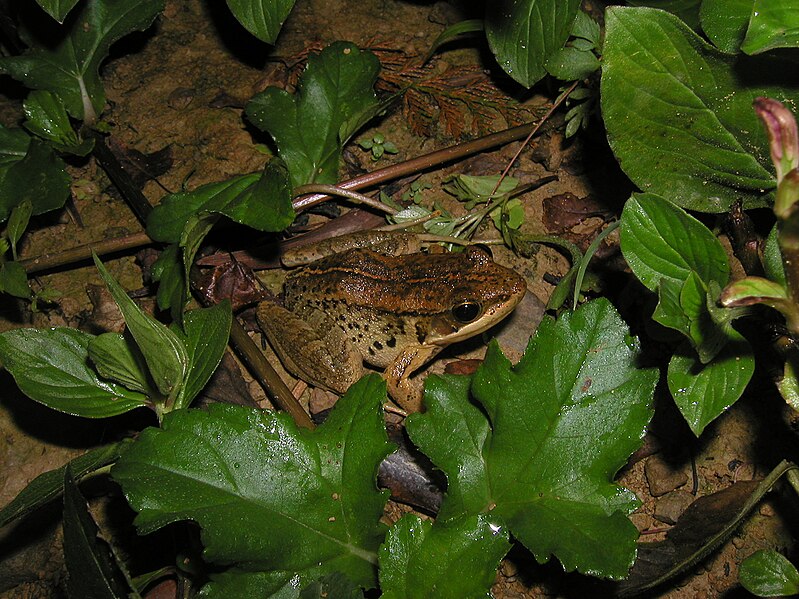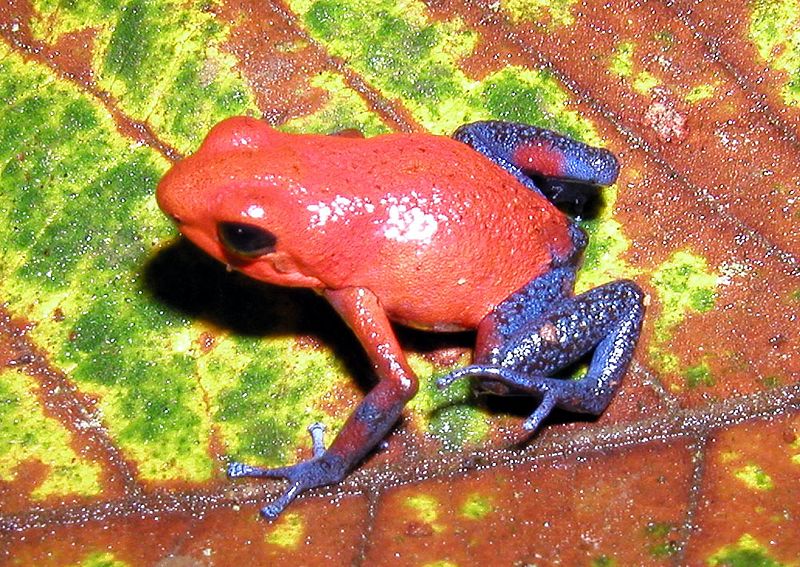In 1705, a painting of a Pink-toed Tarantula consuming a hummingbird, published in Maria S. Merian’s book on the insects of Suriname, aroused so much attention (and horror!) that all New World tarantulas are commonly termed “bird-eating spiders” to this day. It seems now that amphibian fanciers have their own dramatic bird-eater – Limnonectes megastomias, an aquatic frog recently described from 3 locations in Thailand.
An Aquatic Ambush Predator
 The newly discovered frog is largely aquatic, and apparently catches birds that come to the water’s edge to drink – quite a unique feeding strategy for a frog (I once saw a surprising film of African Side-necked Turtles catching doves in this manner).
The newly discovered frog is largely aquatic, and apparently catches birds that come to the water’s edge to drink – quite a unique feeding strategy for a frog (I once saw a surprising film of African Side-necked Turtles catching doves in this manner).
It is assisted in hunting by large (to 2 inch) “fangs” and a head that is disproportionately large for the body. The fangs are not true teeth but rather extensions of the jawbone, known as odontoid processes. The African Bullfrog and the South American Horned Frogs, known also for consuming vertebrates (and biting the hand that feeds them!), also sport odontoid processes. Insects and other frogs have also been recorded as prey.
Same Bodies, Larger Heads – Sexual Dimorphism
Interestingly, the heads and “teeth” of male Bird-eating Frogs grow much larger than those of females, despite similar body sizes. In certain other creatures (i.e. Barbour’s Map Turtles) this strategy allows the sexes to consume different diets and, it is theorized, avoid competition. Researchers also believe that the enlarged teeth are used in combat, as many males carry scars.
So Much to Discover
There are over 50 species classified in the genus Limnonectes- the new “bird-eater” appears most closely related to the Kuhl’s or Large-Headed Frog, L. Kuhlii, but little is known of its natural history (the photo attached is of a Kuhl’s frog).
This new species was first observed at the Sakaerat Environmental Research Station, an area that has been extensively studied for 40 years. The fact that such a large and unique frog was able to remain undiscovered in this area illustrates the untold opportunities open to those who wish to get out and look around in just about any habitat – recently a new centipede was discovered in NYC’s Central Park!
Further Reading
Another toothed amphibian behemoth, the African Bullfrog, also takes quite large prey…to read about a most unusual frog meal, please see my article An Appetite for Cobras.
Limnonectes kuhlii image referenced from wikipedia and originally posted by W. Djatmiko
 A recent study has challenged what we know, or thought we knew, about frog communication. Researchers were astonished to discover that the calls of male Emei Music Frogs, (Babina daunchina) inform females of such details as the length and width of the singer’s burrow.
A recent study has challenged what we know, or thought we knew, about frog communication. Researchers were astonished to discover that the calls of male Emei Music Frogs, (Babina daunchina) inform females of such details as the length and width of the singer’s burrow. That Reptile Blog – Reptile, Amphibian and Exotic Pet Care and Information
That Reptile Blog – Reptile, Amphibian and Exotic Pet Care and Information




 The newly discovered frog is largely aquatic, and apparently catches birds that come to the water’s edge to drink – quite a unique feeding strategy for a frog (I once saw a surprising film of African Side-necked Turtles catching doves in this manner).
The newly discovered frog is largely aquatic, and apparently catches birds that come to the water’s edge to drink – quite a unique feeding strategy for a frog (I once saw a surprising film of African Side-necked Turtles catching doves in this manner).